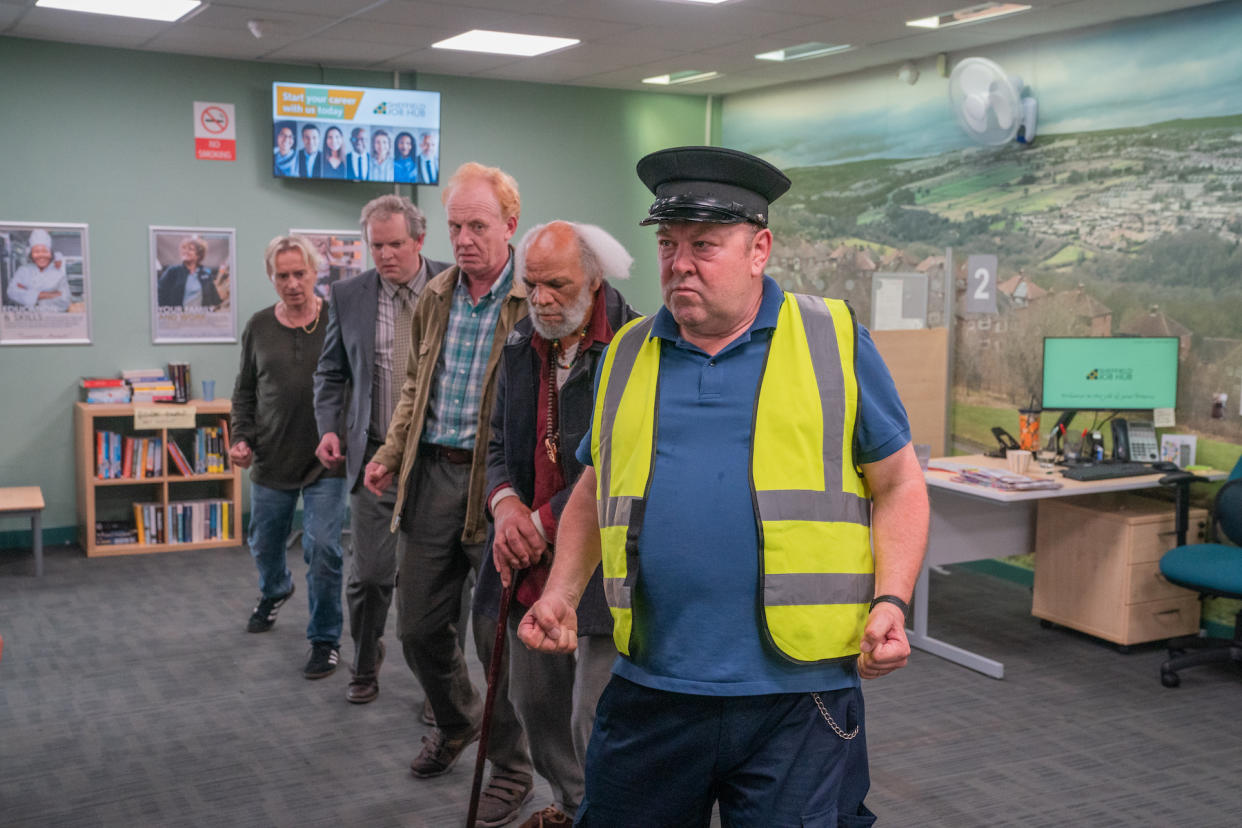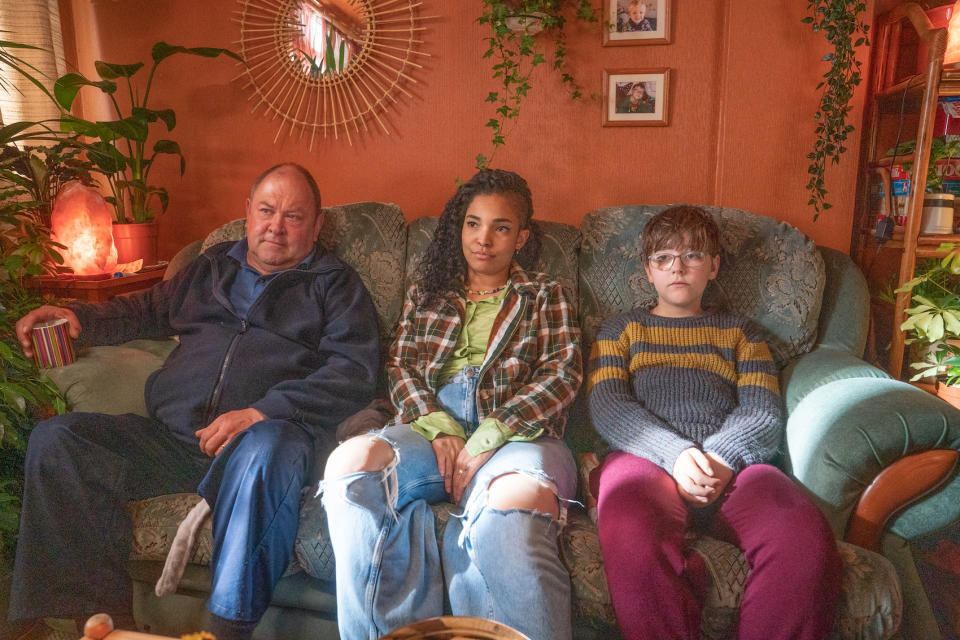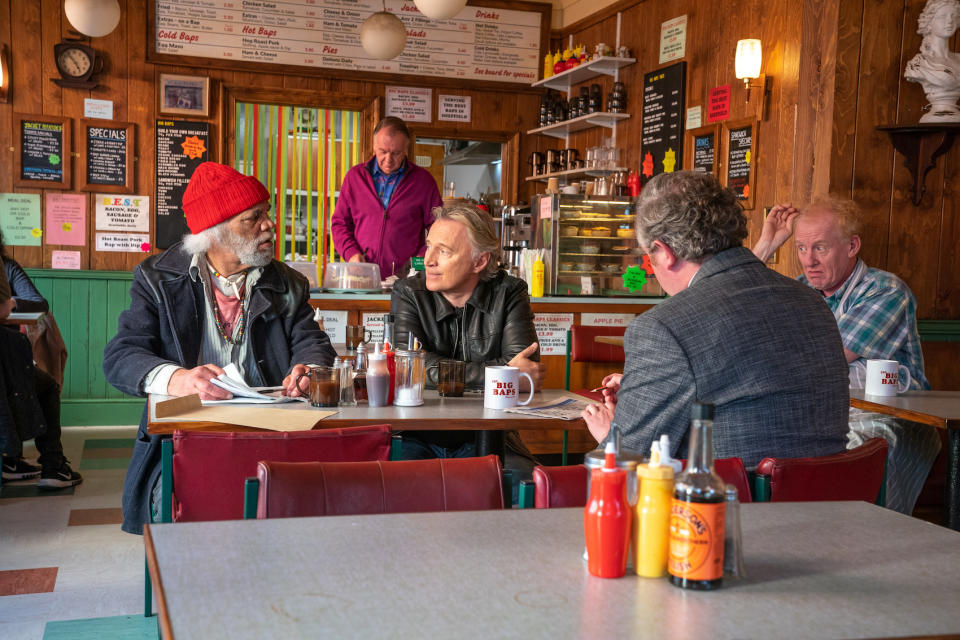‘The Full Monty’ Is a Missed Opportunity to Make a TV Sequel Worth Celebrating

- Oops!Something went wrong.Please try again later.
Whether they invite them or not, there are few stories where imagining what comes next is impossible. Part of the appeal of popular, lasting films and series is that they occupy a slice of a world, with the promise that something interesting might be happening elsewhere. Amidst the avalanche of brand extensions and franchise retreads and character revivals, “The Full Monty” feels like the kind of plucky independent film hit that could provide a foundation for a “where are they now” story that doesn’t feel like a cynical cash grab or marketing play. A quarter century after the original movie found success in a number of different arenas, a new FX series aims to revisit a ragtag group in the north England city of Sheffield to see what happens a generation after a sensation.
The answer, it turns out, is unclear and (at times) unconvincing. Decades after the 1997 Simon Beaufoy-written/Peter Cattaneo-directed film nimbly fused a shifting regional ethos with a fun premise about a group of blue collar workers putting on a one-night nude strip show, the follow-up series is doing something decidedly different. In some ways, that’s to its credit. After a quick overview piecing together a few film clips (and outside of a few passing references to some plot developments), this is not an eight-episode tour through the glory days where the gang gets back together for a beat-for-beat retread.
More from IndieWire
Instead, without a real connecting thread for much of the season outside of checking in with the people in and around that one-night revue from the twilight of the John Major years, this “Full Monty” bounces around between a handful of new problems facing everyone involved. Gaz (Robert Carlyle) is trying to keep connections to children who’ve grown up almost in spite of him, while Dave (Mark Addy) is doing his best as a school maintenance man to save lonely students from slipping through the cracks. Now in charge of a penny-pinching administrative company, Guy (Hugo Speer) is getting rich off the misfortunes of his former neighbors, while Horse (Paul Barber) is barely managing to maintain his own disability income. When they and Gerald (Tom Wilkinson) all manage to come together again to examine/lament the state of the world, it’s at the flailing sandwich shop Lomper (Steve Huison) and his husband Dennis (Paul Clayton) run together.

At the risk of engaging in a one-to-one comparison the show doesn’t invite much beyond its title, the film was able to capture a particular mix of unlikely camaraderie and underlying melancholy, all powered by a sense of male fragility being overcome in some ways and merely pushed aside in others. What persists in this show is the idea that a changing world makes the future unclear. That also goes for Dave’s wife Jean (Lesley Sharp), who’s encountering her own personal workplace dilemmas. Gaz’s daughter Destiny (Talitha Wing) is one of those next-generation teens looking for any source of stability while families and schools crumble (in the latter case, quite literally).
In broaching all these ideas, series writers Beaufoy and Alice Nutter follow a vague structure where one character gets the main spotlight per episode, while the rest carry on with their own personal quandaries. It’s handy organization for a show that adds to its already big ensemble with each new chapter, but it does tend to reduce each of them to a single signifier. There’s the Dangerously-in-Debt One, the Unwilling-to-Confront-Grief One, the Devoted-to-the-Rules One. There’s not enough of a framework here to let these people exist as much more than each addressing a 2023 concern as a case study. (It’s not all that different from a popular streaming show’s recent, disappointing third season.) If the promise of an eight-episode season is to see these figures beyond what they were for a single night 25 years ago, this is time spread thin.
It’s what makes any attempt to go beyond that look at day-to-day life feel tacked-on and forced, like the show is willing each of them out of their ruts with quirky dashes of the absurd. There are rooftop animal chases and comical police raids and fights over “Glee”-ish renditions of 2010s pop songs, all signs of a show artificially inflating a sense of drama and liveliness that would already be there if it wasn’t trying so hard to make people like it. It also doesn’t help that it’s all presented with a kind of glossy, over-lit sheen that sometimes makes the show seem mildly indifferent to the characters enduring the biggest hardships.

Despite all the contrived elements piled on top, “The Full Monty” does thrive in its gentler moments. That’s due in part to a more genuine sense of wrestling with life that cuts through the treacly bits. But it’s also where this show better understands what keeps all these characters wanting to be connected in the first place. When the dust settles and people can have actual conversations that aren’t being done in between footraces or madcap antics, that’s when “The Full Monty” gets closest to why people would want to check back in with Sheffield in the first place. There’s charm here to be found among the hectic distractions — Addy and Carlyle in particular are adept at finding the glimmer of light in a dreary situation. Gaz’s heart-to-hearts with Des and Dave’s extra efforts to make some social outcasts feel welcome feel like the backbone of a show with a greater sense of purpose.
It’s from those conversations that the show makes some of its bold pronouncements about the state of things: for-profit enterprises cannibalizing the quality of life for people of all ages, systemic nets falling away due to lack of support, people drifting apart in an age where it’s harder then ever to come together. “We’re all that’s left. We got to help each other,” one of them says late in the season. A sweet sentiment, but one that the show puts forward while also using one particular character as a kind of misery sponge. Largely left out of the goofy frolicking and left to fend for himself against a demanding job and some bureaucratic hurdles, he gets overlooked by both his mates and the show itself until it’s too late.
The original “The Full Monty” was fueled by turning desperation into celebration. Their solution was fleeting, a fun diversion to distract from the things that would still be unresolved the next day or week or year. In series form, any of those same feelings are scattershot, often left up to individuals to sort out themselves. There’s an overall pendulum swing between cheery optimism and jokey hijinks and eventual somberness that never feels like it’s all located within the same show. It’s an understandable approach for a multi-part arc about the roller-coaster of life, but there’s a difference between having to figure things out on the fly and having a messy plan to begin with.
Grade: C
“The Full Monty” is now available to stream via FX on Hulu.
Best of IndieWire
Sign up for Indiewire's Newsletter. For the latest news, follow us on Facebook, Twitter, and Instagram.

